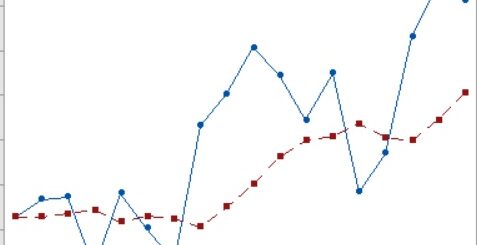How to find the Mean Deviation? MD Vs MAD-Quick Guide
How to find the mean deviation?, In this article, we are going to describe mean deviation and mean absolute deviation.
What is statistical data? Functions, Methods, and Types »
1. Mean Deviation
Mean deviation is a measure of dispersion that is primarily based on all values of a set of data.
It is described as the average of the absolute deviations taken from an average usually, the mean, median or mode.
As commonly denoted as τ, for the better clarification whether the average used in mean deviation is mean, median or mode, a suffix is attached to τ, like τM, τMd, or τMo.
Median is commonly used as an average value about which the mean deviation is calculated.
Coefficient of Mean Deviation
It’s good to talk about coefficient of mean deviation.
Mead deviation has the same unit of measurements as that of variable x. If two data series have different units of measurement, the datasets cannot be compared.
Hence evaluating any two series, an unitless measure is referred to as coefficient of mean deviation.
It is the ratio of mean deviation to the average ‘A’ used in calculating it.
Coefficient of MD= (Mean Deviation /A)*100
While it is multiplied by 100 coefficient of mean deviation expressed as in percentage.
Naive Bayes Classification in R » Prediction Model »
Merits of Mean Deviation
- It utilizes all the observations of the set.
- It is simple to calculate and understand
- It is least affected by extreme values.
Demerits of the Mean Deviation
- In the formula, negative differences are considered as positive without any soundproof.
- Not suitable for open-end frequency distribution.
2. Median Absolute Deviation
Let’s discuss about Median Absolute Deviation?
As we know standard deviation is one of the measures of dispersion and it is affected by extreme values, the median absolute deviation is an alternative measure of dispersion.
Median absolute deviation is defined as the median of the absolute deviation taken from median.
MAD=Median|Xi-XMd|
How to find the Mean Deviation
What is Mean Deviation for the data series 8, 4,3, 2, 4, 1.
Solution:
The data values are 8, 4,3, 2, 4, 1
No we have some theoretical knowledge about mean deviation let’s see how to calculate the same.
KNN Algorithm Machine Learning » Classification & Regression »
First, need to calculate the average
Mean, µ = (8+4+3+2+4+1)/6
µ = 22/6
µ = 3.67
Therefore, the mean value is 3.67.
Now, subtract each mean from the data value, and ignore the minus symbol if any as discussed earlier there is no proper reason.
8 – 3.67 = 4.33
4 – 3.67 = 0.33
3 – 3.67 = 0.67
2 – 3.67 = 1.67
4 – 3.67 = 0.33
1 – 3.67 = 2.67
Now, the obtained data set difference is 4.33, 0.33, 0.67, 1.67, 0.33, 2.67
Now we can calculate the mean deviation for the data set
Mean Deviation = (4.33+0.33 + 0.67+ 1.67+ 0.33+2.67) /6
Mean Deviation = 10/6
Mean Deviation = 1.66
Hence, the mean deviation for 8, 4,3, 2, 4, 1 is 1.66.
You can calculate Man absolute deviation in R also, while utilizing mad argument.
X<-c(8, 4,3, 2, 4, 1) mad(X)
Man absolute deviation is 1.48
Decision Trees in R » Classification & Regression »
Don’t forget to show your love, Subscribe the Newsletter and COMMENT below!
[newsletter_form type="minimal"]


